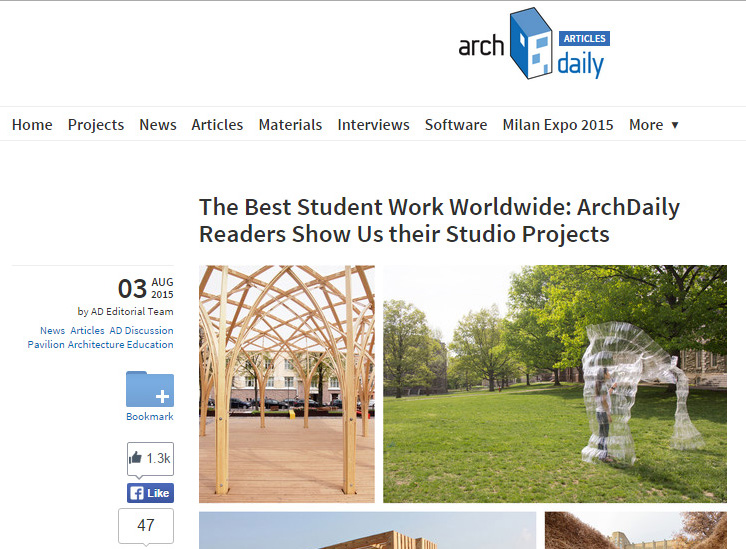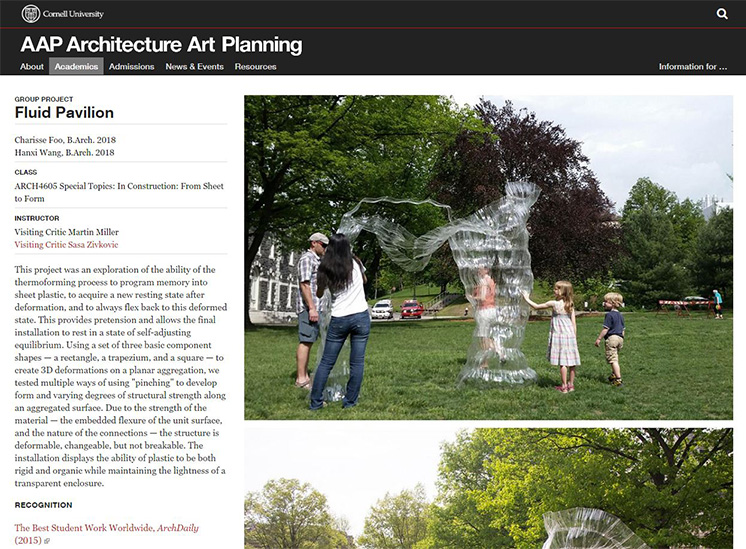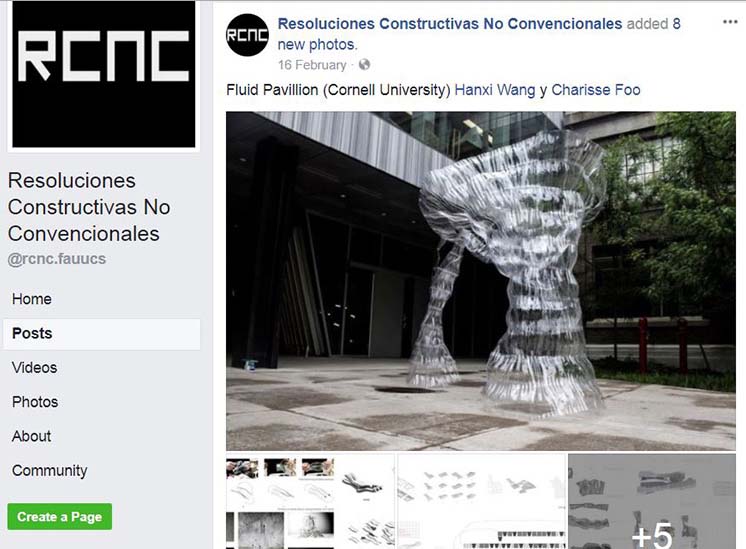


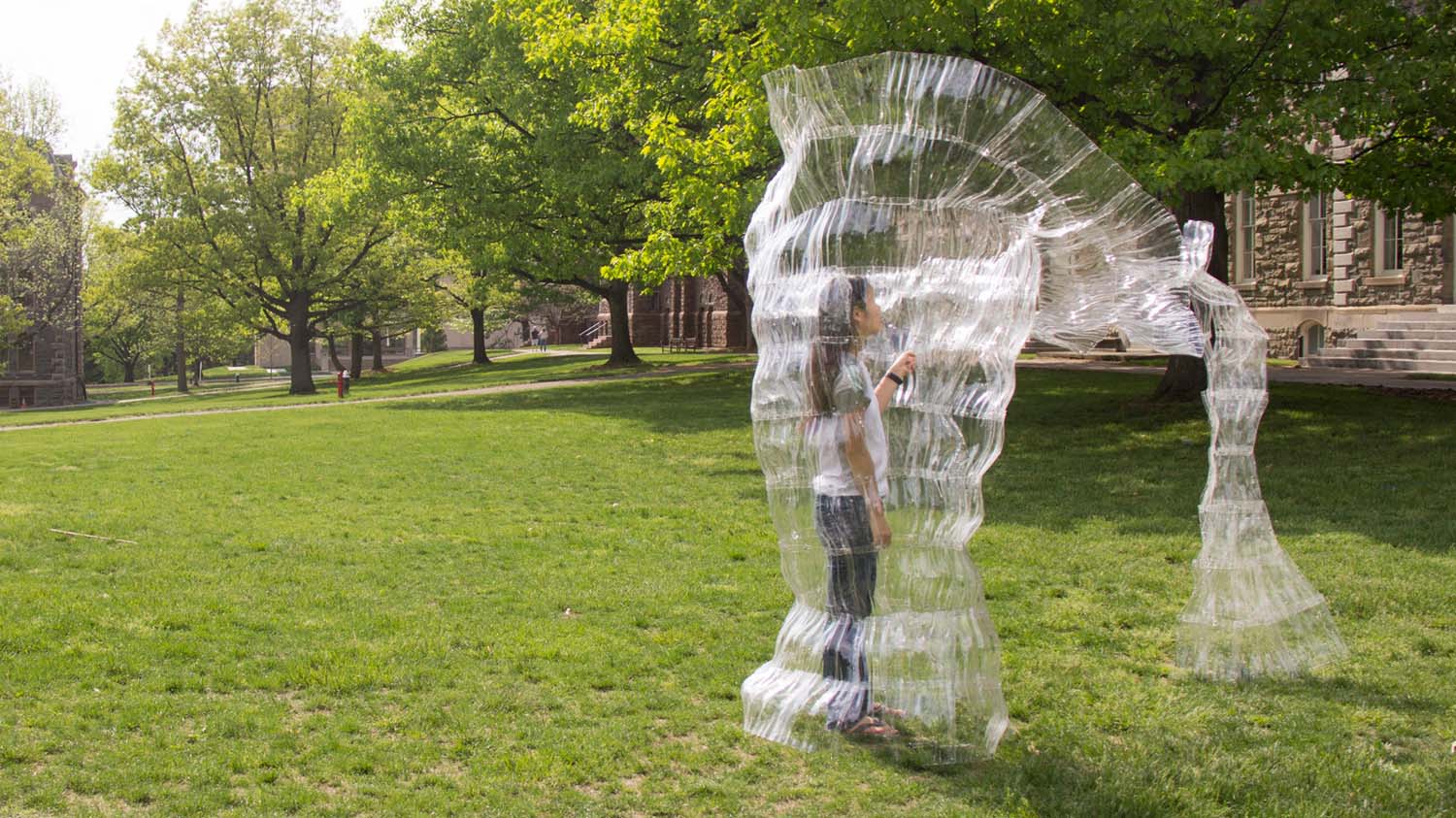
What does structural memory look like?
An ethereal presence, Fluid Pavilion displays the ability of plastic to be both rigid and organic, with the lightness of a transparent enclosure. Built upon spatial, material, and visual deformations, the pavilion is both clear and hazy, open and closed: as much a window frame as it is a wall.
Fluid Pavilion was a collaboration with Hanxi Wang, with the mentorship of Sasa Zivkovic and Martin Miller, Cornell University.
Fluid Pavilion was published in ArchDaily’s Best Student Work Worldwide (2015), Cornell AAP's Featured Student Work, Rethinking The Future, and Resoluciones Constructivas No Convencionales.
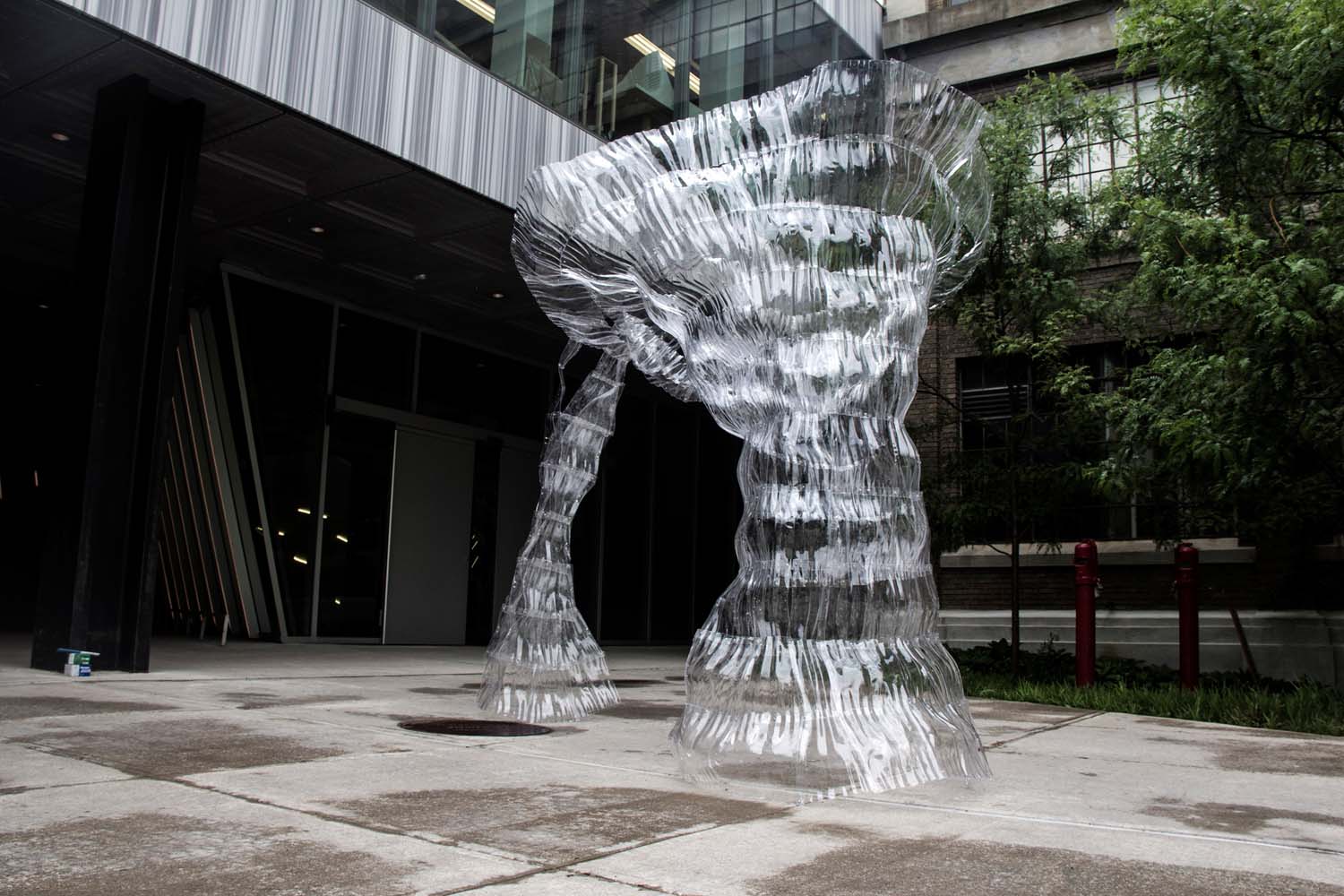

In this 1:1 experimental installation, thermoformed PETG sheets were found to acquire a new resting state after deformation. This ‘memory’ meant that each plastic sheet would always flex back to its deformed state. The final installation thus rests in a state of self-adjusting equilibrium.
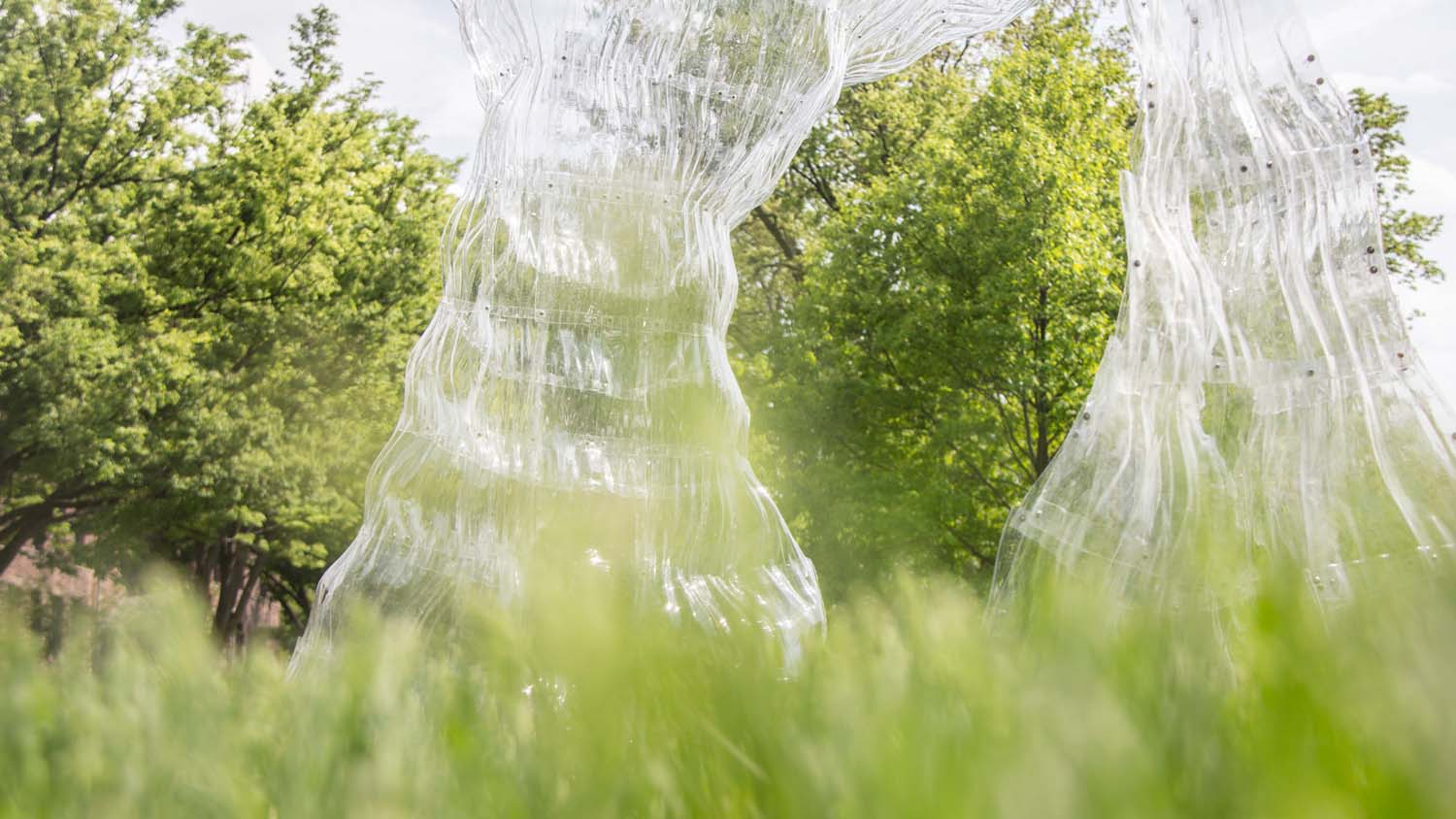
The final global form houses three structural systems: a large, soft, and occupiable tubular column that expands out and cantilevers at the top,; a thin, rigid column formed by triangulated units; and a series of mobile strips forming an arch between the two.

Materiality

This early experiment with thermoformed plastic captures its transformation, with ‘memory’ embedded into the material. The flat sheet of plastic has been thermoformed into a curved, wavy surface, and holds this curved shape. When stretched out, it springs back to its wavy shape.
In exploring PETG plastic as a material, its malleability (plasticity) and elasticity were of great interest to us: under heat, plastic could be shaped freely; after thermoforming, it would retain and even spring back to its shape.
Design Process
The entire pavilion is made of three types of units: a rectangle, a trapezium and a square.
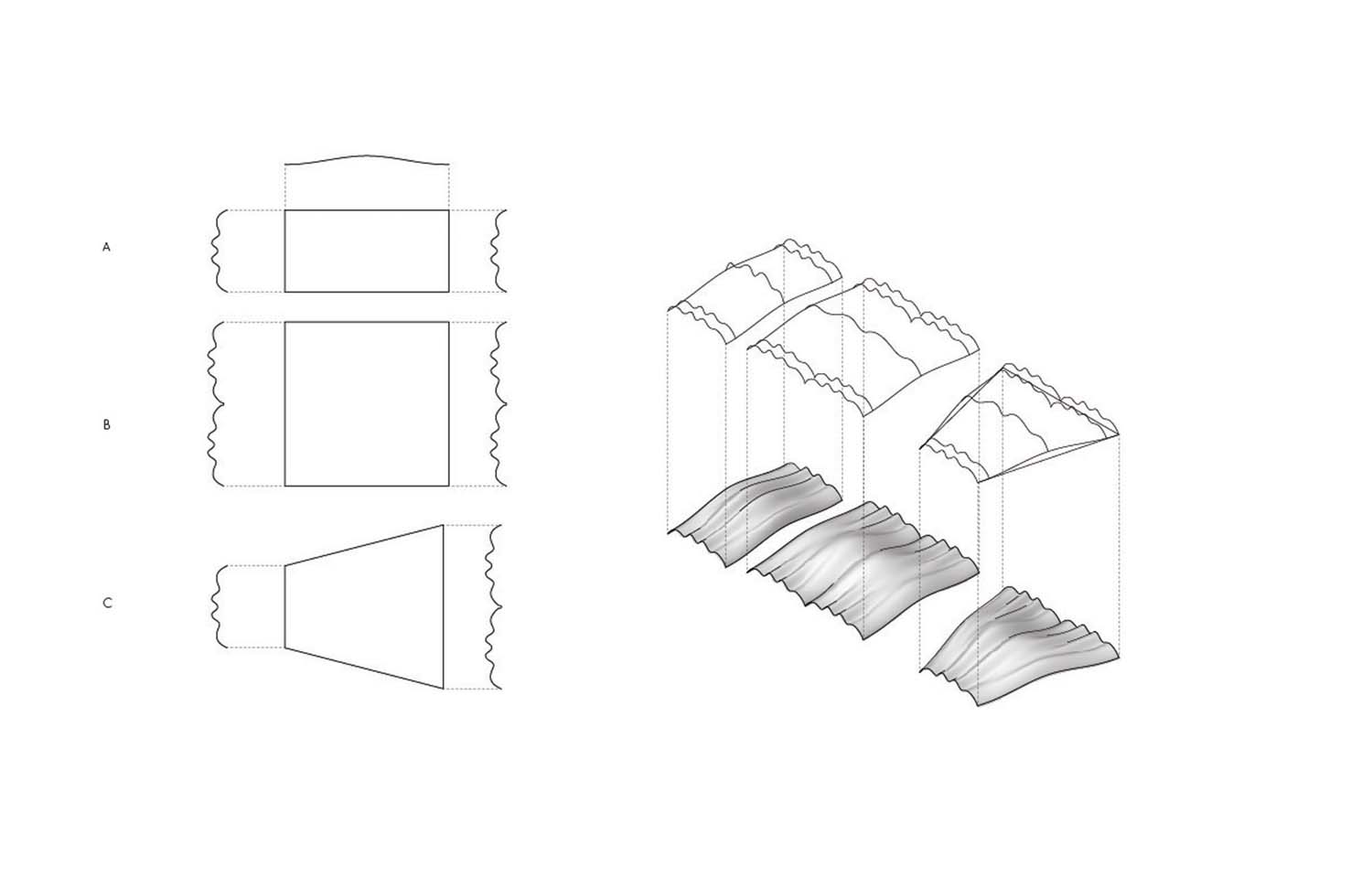
A rectangle is 1 unit wide, a square is 2 units wide, and a trapezium connects 1 unit to 2 units. Three-dimensional deformations expected from thermoforming plastic were modelled on top of this planar unit-to-unit aggregation.
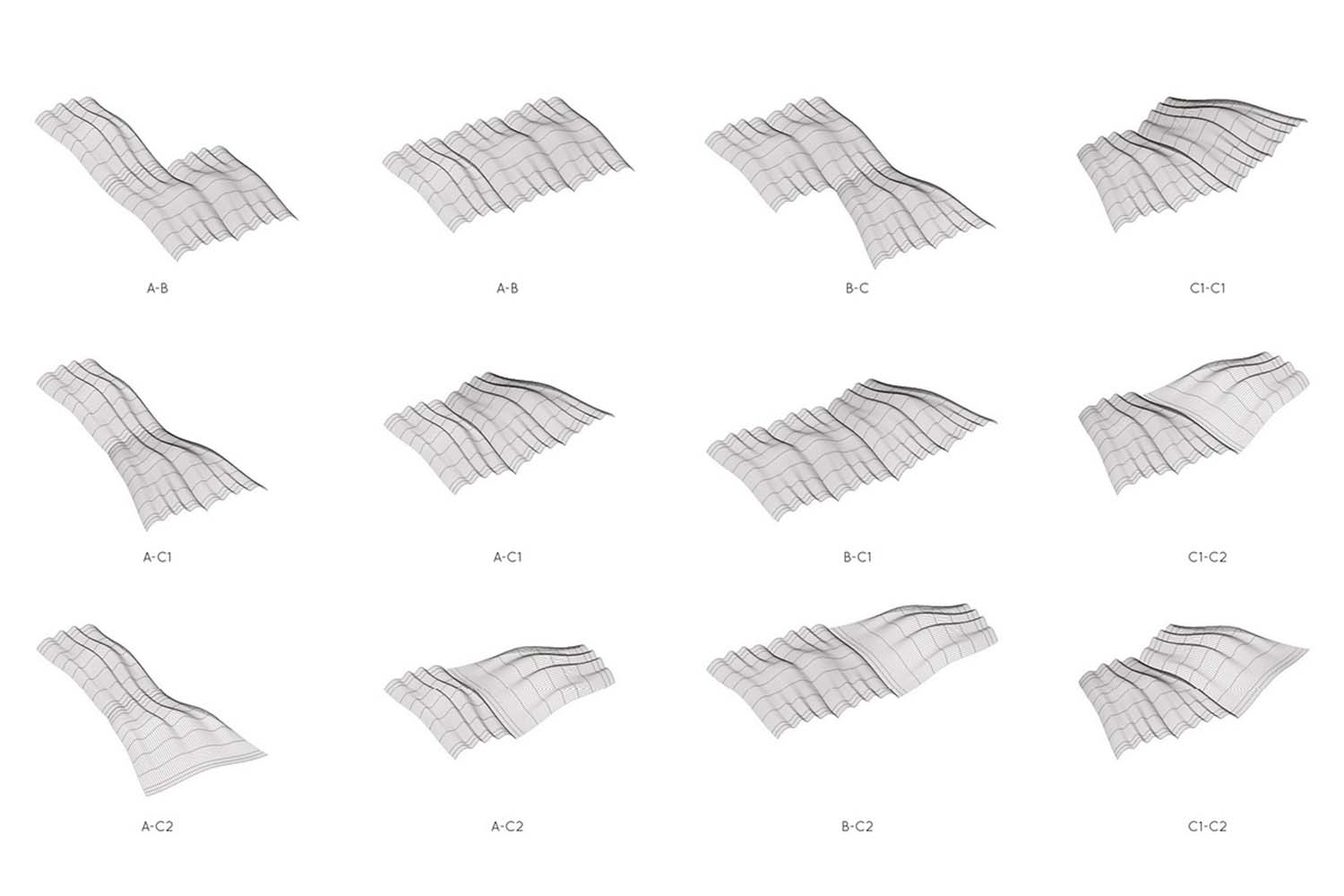
In aggregating these three elements, we were interested in creating ‘pinching’ within the entire surface, so as to develop three-dimensional form. This also created varying degrees of structural strength.
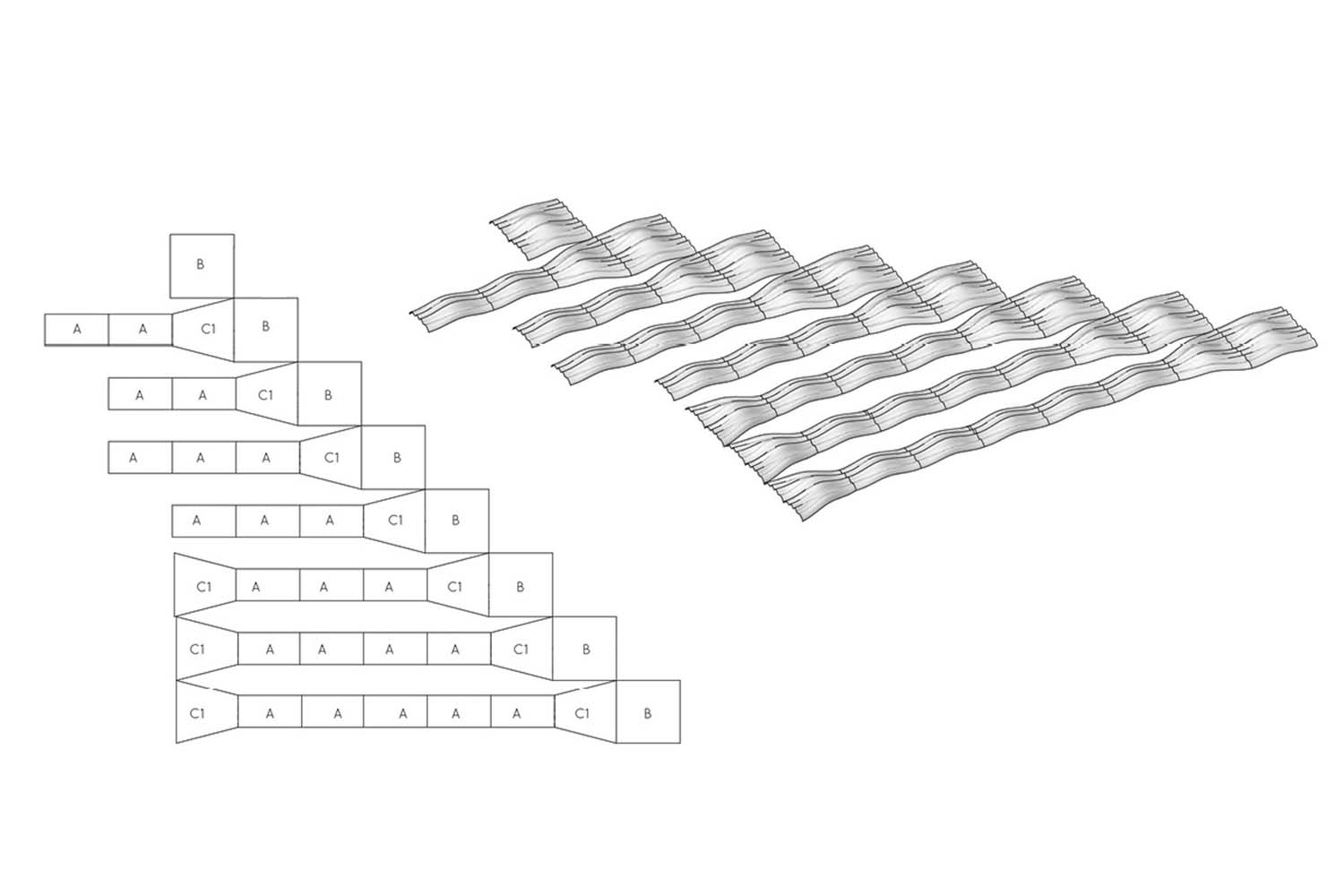
These aggregations were modelled digitally and tested in Kangaroo, with a magnetic force causing the pinching between the surfaces.

Of course, we also tested these with physical chipboard models, which were laser-cut and glued together.
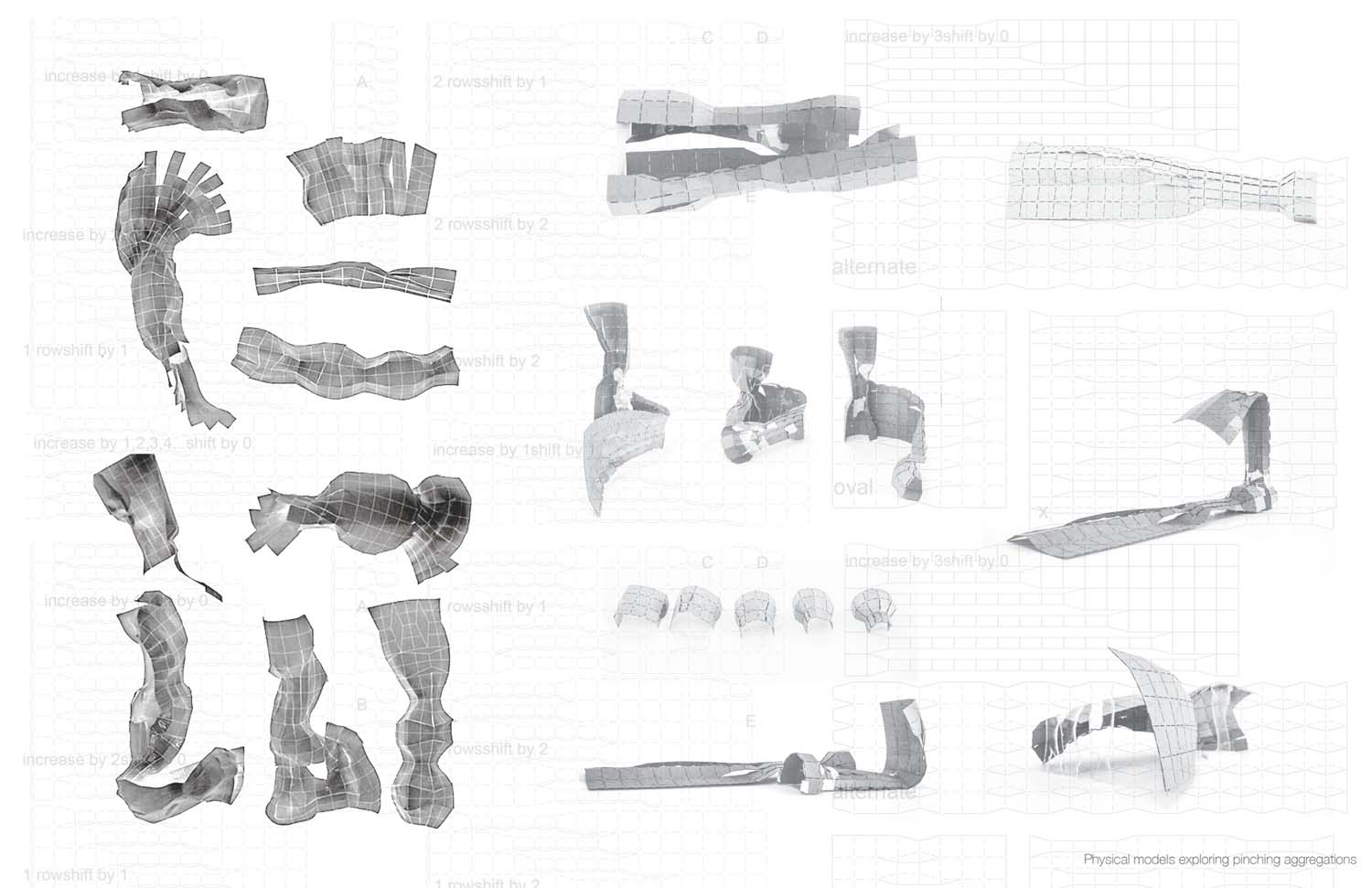
Here are some aggregations we explored, in 2D form and their resultant 3D form.

Here is an unfolded diagram of our final pavilion, composed of the same three units.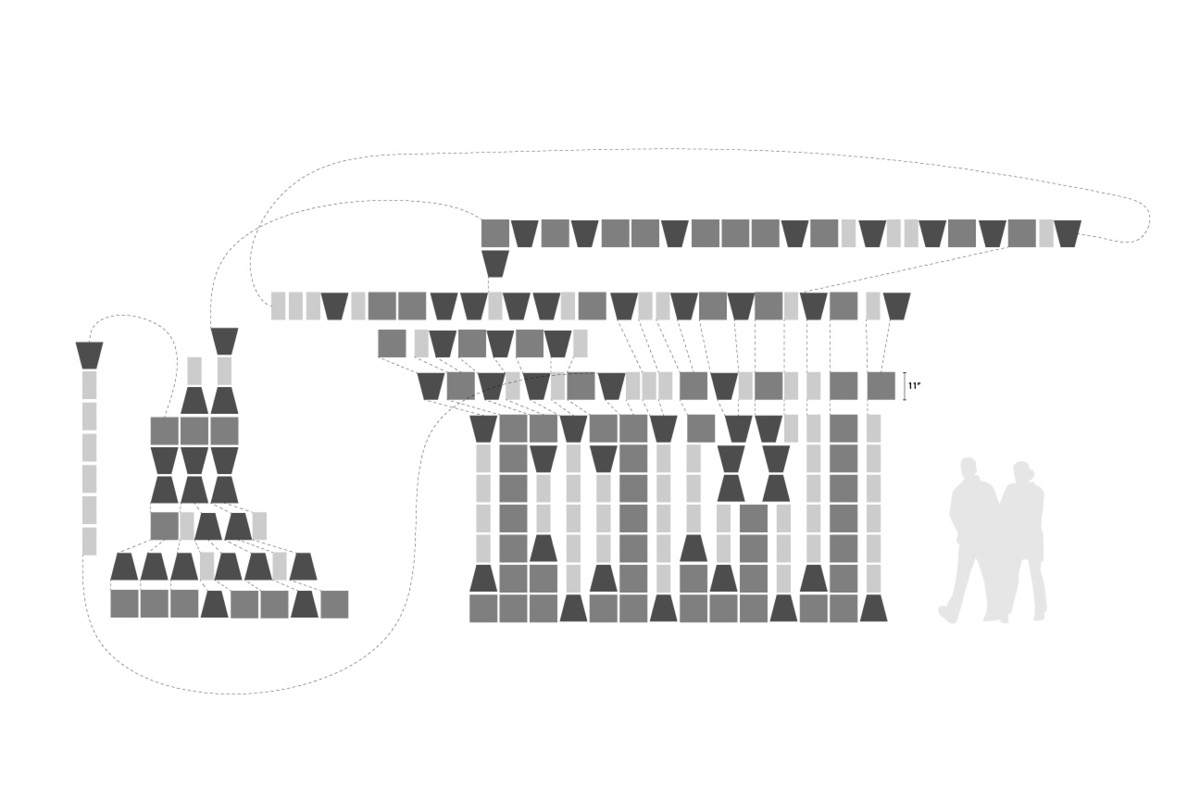
Fabrication Process
Hanxi and I designed our own fabrication process in order to build the entire installation ourselves.
Moulds for the three units were CNC-milled, with a positive and negative mould for each unit, so that the plastic could be pressed in between the two moulds. PETG plastic sheets were cut to size: essentially into 1’ squares, since we were working with 4’ x 8’ plastic sheets. We used an oven (nothing fancy!) to heat up both the mould and the plastic sheet, until the plastic conformed to the shape of the mould.

Every unit was made in this manner:
- After being removed from the oven, the plastic was sandwiched between the top and bottom moulds.
- Once the plastic had hardened - usually in a matter of seconds - it was removed.
- Extra plastic was trimmed off with a bandsaw.
- Rough edges were sanded with a belt sander.
- Holes were drilled at fixed connection points. The positions of these holes were already drilled in the wooden moulds, so it was simply a matter of lining up the plastic piece and the mould, then drilling with a hand drill.
Each unit had a maximum of 12 connection points, allowing for alternating connections between units.

Since much of our building was iterative and experimental, fasteners were used as temporary joints. These were ultimately replaced by rivets when their position was confirmed.
Here is an overview of our fabrication process: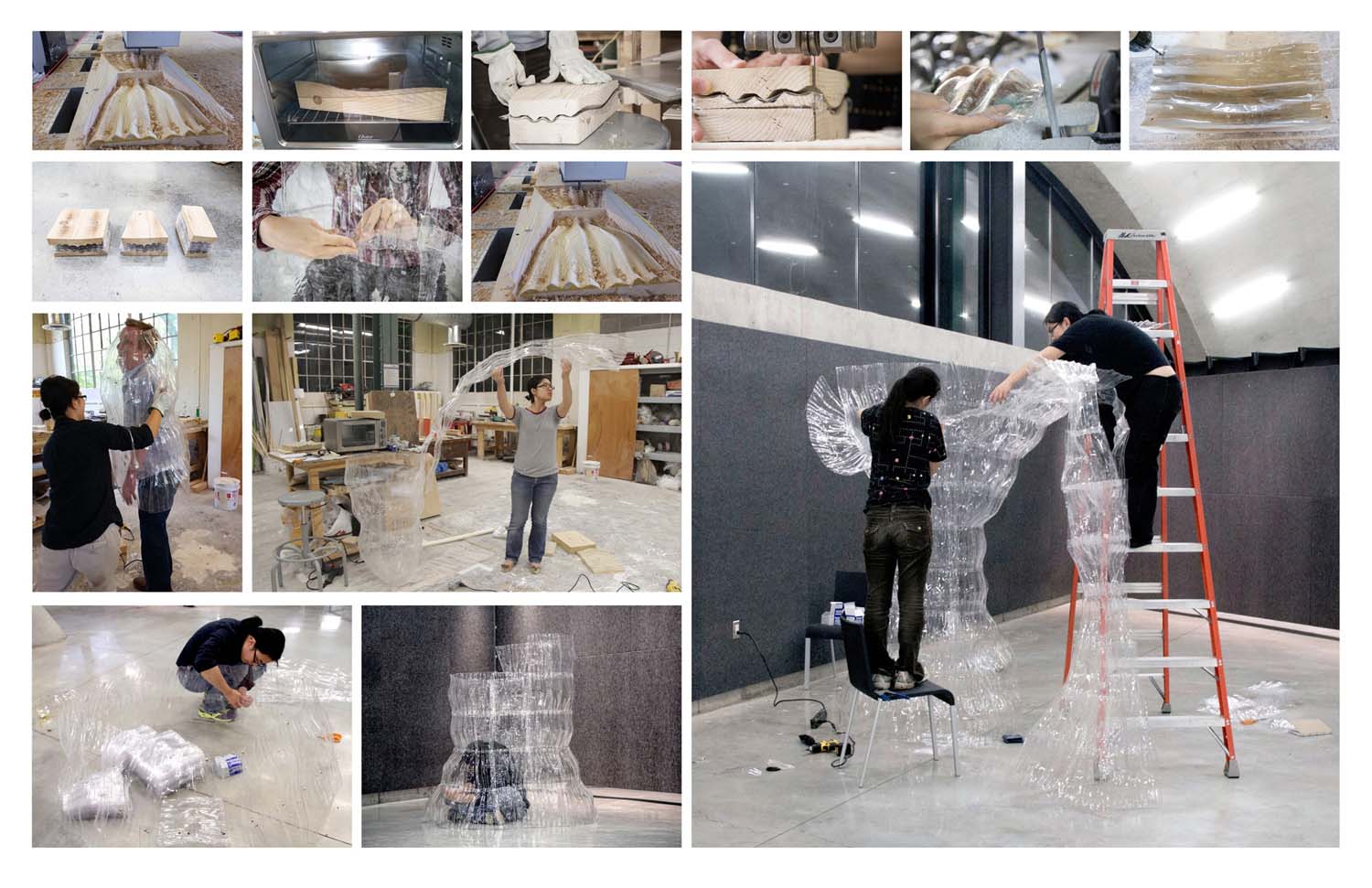
Publication
It was an honour to have Fluid Pavilion featured in ArchDaily’s Best Student Work Worldwide (2015), as well as Cornell AAP's Student Work Feature. We also thank Rethinking The Future and Resoluciones Constructivas No Convencionales for taking an interest in our work and kindly approaching us to publish it.
